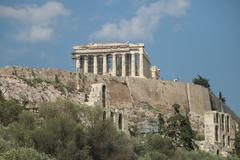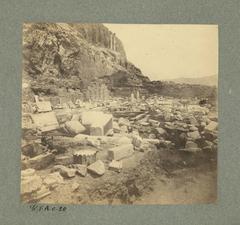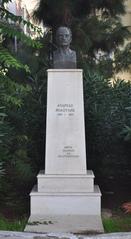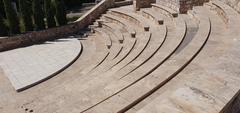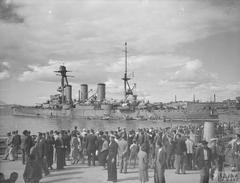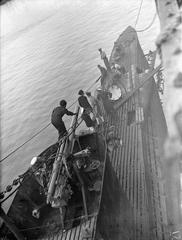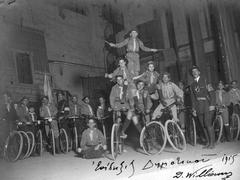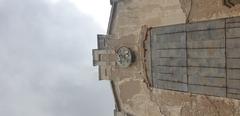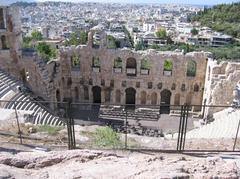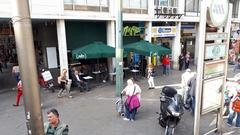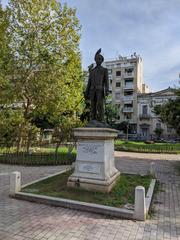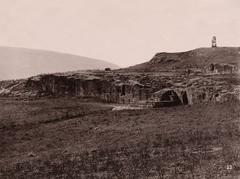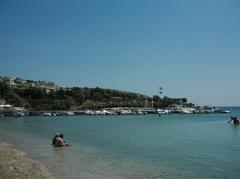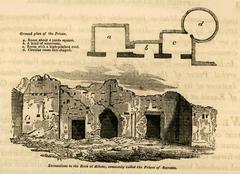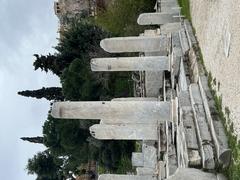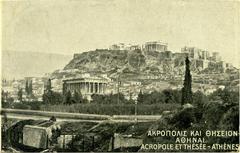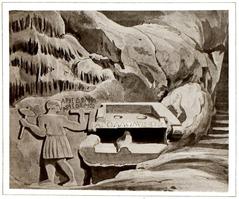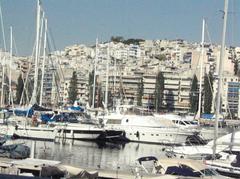University of Piraeus Visiting Hours, Tickets, and Guide to Piraeus Historical Sites
Date: 14/06/2025
Introduction
Piraeus, the vibrant port city of Greece, is renowned for its deep maritime roots, cosmopolitan culture, and historical significance. At the heart of this dynamic urban landscape lies the University of Piraeus, an academic institution specializing in economics, business, and maritime studies, which plays a vital role in the city’s intellectual and cultural life. For visitors and students alike, Piraeus offers a wealth of historical sites—most notably the Archaeological Museum of Piraeus and the Monument of Piraeus—that vividly illustrate the area’s pivotal role as Athens’ ancient harbor and a modern maritime center.
This guide provides comprehensive information on visiting hours, ticketing, transportation, guided tours, accessibility, and practical tips for exploring Piraeus’s key cultural attractions. Whether you are a history enthusiast, a student, or a traveler seeking to experience Greece’s maritime legacy, this article will equip you with all you need to plan a rewarding visit (Archaeological Museum of Piraeus; Monument of Piraeus; University of Piraeus).
Table of Contents
- Introduction
- Historical and Cultural Significance
- Visiting Hours and Tickets
- Getting There
- Guided Tours and Visitor Experience
- Facilities and Accessibility
- Nearby Attractions
- Photography and Festivals
- Practical and Travel Tips
- FAQ
- Conclusion
Historical and Cultural Significance
Archaeological Museum of Piraeus
Established in 1935, the Archaeological Museum of Piraeus houses an impressive array of artifacts—from sculptures and pottery to inscriptions and coins—spanning the city’s history from prehistoric times to the Roman era. The museum’s collections highlight Piraeus’s crucial role as Athens’s primary harbor and naval base, showcasing relics from the classical and Hellenistic periods that narrate the city’s maritime and military heritage.
Monument of Piraeus
The Monument of Piraeus stands as a symbolic tribute to the city’s enduring connection to the sea. Its classical architecture and maritime inscriptions celebrate Piraeus’s contributions to Greek naval power and trade throughout history, serving as both a cultural landmark and a reminder of the city’s strategic Mediterranean importance.
Visiting Hours and Tickets
Archaeological Museum of Piraeus
- Opening Hours: Tuesday to Sunday, 8:30 AM – 3:00 PM; closed Mondays.
- Tickets: €5 for adults; reduced rates for students and seniors. Admission is free on select public holidays (e.g., International Museum Day). Check the official website for updates and special exhibitions.
Monument of Piraeus
- Opening Hours: Daily, 9:00 AM – 7:00 PM; summer hours (June–September) extend to 9:00 PM.
- Admission: Free for all visitors. Guided tours are available on weekends and public holidays for a fee; book via the official tourism website.
Getting There
- Archaeological Museum: 16 P. Kalligas Street. Easily accessible from Piraeus Port and the central train station. Take Metro Line 1 (Piraeus station), bus, or walk from major transport hubs.
- Monument of Piraeus: Near Marina Zea, a short walk from the Piraeus metro station. Multiple bus and trolleybus lines serve the area.
Tip: Extensive signage in English and Greek guides visitors from all major transit points.
Guided Tours and Visitor Experience
- Archaeological Museum: Guided tours in several languages can be booked in advance. Audio guides and brochures are available at the entrance.
- Monument of Piraeus: Guided and self-guided audio tours provide rich historical context. Guides share stories about the monument’s classical features and maritime legacy.
Facilities and Accessibility
- Archaeological Museum: Wheelchair access, ramps, elevators, and accessible restrooms.
- Monument of Piraeus: Ramps, tactile paths, shaded seating, multilingual signage, and visitor information centers.
- Amenities: Museum shop, on-site café, and free Wi-Fi at visitor centers.
Nearby Attractions
- Hellenic Maritime Museum: Explore Greece’s naval history and ship models (Hellenic Maritime Museum).
- Municipal Theatre of Piraeus: A neoclassical landmark hosting cultural events (Municipal Theatre of Piraeus).
- Kastella & Mikrolimano: Picturesque harbors with seafood tavernas and nightlife.
- Votsalakia Beach: Ideal for relaxation after sightseeing.
Photography and Festivals
- Photography: Personal use is permitted; avoid flash and tripods without permission. The Monument of Piraeus is especially photogenic at sunrise and sunset.
- Festivals:
- Navy Week (June): Naval parades, concerts, exhibitions.
- Carnival (February/March): Street performances and parades.
- Local Markets: Sample seafood and traditional delicacies.
Event schedules can be found on the City of Piraeus Official Tourism Site.
Practical and Travel Tips
- Best Seasons: Spring (March–May) and early autumn (September–October) for mild weather and fewer crowds.
- Language: English widely spoken; learning basic Greek greetings (“Kalimera”) enriches the experience.
- Currency: Euro (€); ATMs and exchange offices are plentiful.
- Safety: Piraeus is generally safe; stay alert in crowded areas.
- Transport: Metro Lines 1 & 3, tram, and buses connect Piraeus with Athens and the airport. Ferries depart frequently for the Greek islands.
- Student Life: The University of Piraeus fosters a lively atmosphere with cafes, bookshops, and waterfront promenades.
FAQ
Q: Are there discounts for groups or families?
A: Yes, group and family rates are available at the Archaeological Museum; inquire ahead.
Q: Is the Archaeological Museum accessible for visitors with disabilities?
A: Yes, the museum is fully accessible.
Q: Can I buy tickets online?
A: Currently, tickets are purchased at the entrance; online sales are planned.
Q: Are guided tours offered in English?
A: Yes, guided and audio tours are available in English and other major languages.
Q: Is there free Wi-Fi at these sites?
A: Yes, free Wi-Fi is provided at visitor centers and the monument’s information center.
Q: What is the best way to get to Piraeus from Athens Airport?
A: Take Metro Line 3 from the airport to Monastiraki, then transfer to Line 1 to Piraeus.
Conclusion
Piraeus offers a compelling blend of ancient history, maritime heritage, and modern city life. The University of Piraeus shapes its academic and social landscape, while sites like the Archaeological Museum and the Monument of Piraeus invite you to explore Greece’s fascinating past. With accessible locations, affordable admissions, and a range of cultural experiences, Piraeus welcomes all visitors.
Start your journey by planning ahead—use public transportation, check for special events, and leverage digital resources like the Audiala app for guided tours and updates. Immerse yourself in the city’s unique atmosphere, from its historic artifacts to lively harbors and culinary delights.
For more information, visit:
- Official Archaeological Museum of Piraeus
- Monument of Piraeus
- University of Piraeus
- City of Piraeus Official Tourism Site
- Hellenic Maritime Museum
Plan your visit today and experience the maritime heart of Greece.
References
- Visiting the Archaeological Museum of Piraeus: Hours, Tickets, and Cultural Significance, 2025, Hellenic Ministry of Culture (http://odysseus.culture.gr/h/4/eh430.jsp?obj_id=3421)
- Visiting the Monument of Piraeus: Hours, Tickets, and Visitor Guide, 2025, Piraeus Tourism (https://www.piraeustourism.gr)
- Visiting the Archaeological Museum of Piraeus: Practical Information and Local Amenities, 2025, BSA Museum (https://www.bsa.gr/en/museum)
- Exploring Piraeus: Visiting Hours, Tickets, and Historical Sites in Greece’s Maritime Hub, 2025, City of Piraeus Official Tourism Site (https://www.piraeustourism.gr/)
- University of Piraeus Official Website, 2025 (http://tourism.unipi.gr/)
